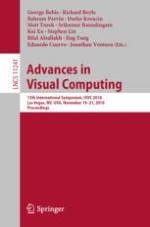2018 | Book
Advances in Visual Computing
13th International Symposium, ISVC 2018, Las Vegas, NV, USA, November 19 – 21, 2018, Proceedings
Editors: Dr. George Bebis, Richard Boyle, Bahram Parvin, Darko Koracin, Matt Turek, Srikumar Ramalingam, Kai Xu, Stephen Lin, Bilal Alsallakh, Jing Yang, Eduardo Cuervo, Ph.D. Jonathan Ventura
Publisher: Springer International Publishing
Book Series : Lecture Notes in Computer Science
